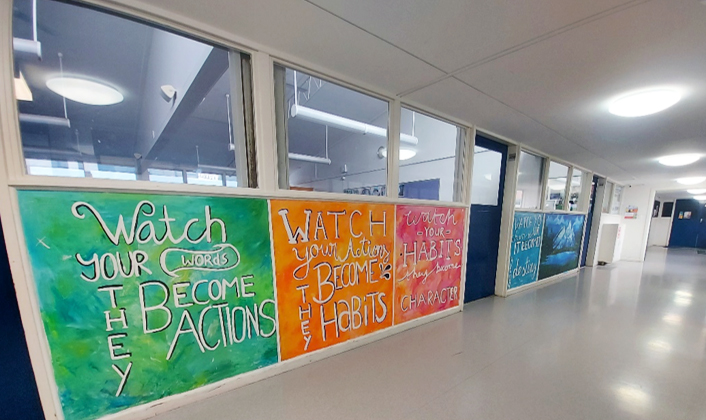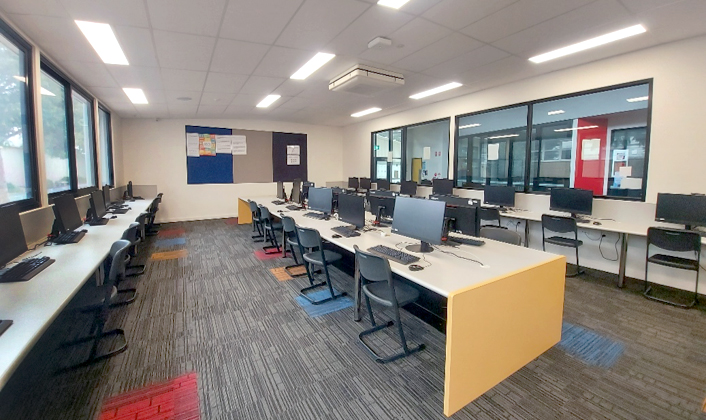Published 14 Jun 2021
Teaching and learning framework - Lalor Secondary College
Engaged in and applied professional learning
Mary-Anne Lilikakis and Corey Jewell
Lalor Secondary College
Schools and early childhood services across Victoria continue to provide quality learning experiences across all levels. The VIT’s Professional Practice team is privileged to see this work firsthand on visits to workplaces around the State. Here is just one example spotlighting the great work happening in a Victorian school.
Many workplaces demonstrate excellence in teaching through their application of the Teaching and Learning Framework to suit the specific needs and challenges of their learners.
Lalor Secondary College bases its Teaching and Learning Framework on the work of University of Auckland Professor Helen Timperley. It is a process to ensure continuous teacher learning and student improvement across all cycles of learning. This is supported further by the instructional model developed by Jane Pollock and described in the text Classroom Instruction that Works (Marzano, Pickering & Pollock, 2001).
The ‘GANAG’ Model works through a series of steps
G – goal setting
A – accessing prior knowledge
N – new knowledge introduced
A – apply thinking skills to this new knowledge
G – goal review
We spoke to Mary-Anne Lilikakis, Pedagogy Leader at Lalor Secondary College, along with College Principal Corey Jewell, about how they developed and continue to apply their approach.
Q: Can you give us some background to the development of your approach to the initiative, including any research or established strategies that your approach is based upon?
A: The Lalor Secondary College Teaching and Learning Framework evolved over a number of years as a result of constant reflection and evaluation. There are three key components of the framework
- Helen Timperley Inquiry and knowledge-building cycle – this asks our teachers to explore the data for every student in their class and identify the needs of each. Teachers can then ask themselves what skills they need to be able to deliver a teaching and learning program at the point of need for each student in their class.
- Instructional Model – the GANAG Model by Jane Pollock is a set of sequenced steps that allows for high quality, consistent lesson and unit design. It is used by all Key Learning Areas in planning.
- Lalor Secondary College Literacy Action Plans – the school’s focus on reading has been adapted to suit each Key Learning Area. Each KLA has assessed the Literacy needs of their subject areas related to each year level and have used the DET Literacy toolkit to develop a specific reading strategy for their subject areas.


Q: What have been the benefits of this approach to learner outcomes?
A: In this instance we refer to the learners as our teaching staff. The LSC teaching framework has really helped to structure consistencies across classrooms and develop clearer expectations of students and staff. But it has also been shown (through our Attitudes to School results) to better our relationships and help us strive for high expectations. Our survey results in 2019 proved that the model helps to create a dynamic learning environment. The College’s average for High Expectations for Success came at an average of 85% of the total students who responded. This is something the College takes great pride in, and we continue to improve on this.
Q: What plans do you have to take this approach forward?
A: Lalor Secondary College has limited the key improvement strategies identified as crucial for school improvement. Resources, including time, have been allocated to these identified key improvement strategies over a five-year period to embed the practices developed. Consistency with messaging to our students and the wider school community has built confidence in the work being achieved in these areas. The College has also been fortunate enough to be in the process of redeveloping learning spaces. This project will begin in Term 3 of 2021 and aims to be completed by the end of 2022. This build will see a new gym, innovating teaching spaces and newer refurbished spaces for staff and students.
Our teaching and learning framework enables our staff to provide real world experiences for our students. An example below is the year 11 Economics class out on a field trip to study in action what supply and demand looks like.

Do you have an example of outstanding work in your school or early childhood service? We’d like to consider showcasing it the Excellence in Teaching section of our website. Send your example and contact details to vitcomms@vit.vic.edu.au.
